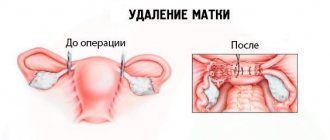Chemotherapy for cervical cancer
Chemotherapy is a modern high-tech method of treating malignant neoplasms, based on the introduction of drugs into the human body, which are antineoplastic chemotherapeutic agents. By their nature, antitumor agents are cellular poisons or toxins that affect cells that tend to divide rapidly.
The goal of the treatment procedure is the complete destruction, inhibition of growth and division of pathological cells. Chemotherapy is an effective measure that reduces the risk of metastasis to nearby and distant organs. The main disadvantage of treatment tactics is that antineoplastic agents act on the entire human body as a whole, and immune function suffers. Normalization of a person’s well-being and the functioning of the entire body is achieved by inhibiting the growth of a malignant neoplasm. Immediately after the administration of drugs of this group, an intense deterioration in well-being can be observed.
Existing types
In gynecological oncology, the following types of chemotherapy are used:
- Non-adjuctive – used to reduce tumor size before surgery. This tactic reduces the likelihood of distant metastasis.
- Adjuvant – used after surgery to prevent metastasis. Eliminates hidden lesions. The technique is used to treat various types of cancer.
- Induction – used for inoperable cancer, effective in case of sensitivity of altered cells to the active substance. The technique is used as a means of palliative therapy in the final stages of oncology.
- Hot or hyperthermic chemotherapy involves exposing cancer cells to high temperatures. It is used when the tumor reaches a significant size or metastasis to the lymphatic system is observed. A distinctive feature is the reduction of toxicity through the use of high temperatures.
- Platinum – used when other means are ineffective; medications contain platinum.
- Targeted - active components act directly on genetically modified cells. The impact is provided at the molecular level. Therapy allows you to stop the growth of atypical cells and start the process of their self-destruction.
- Gentle - used if the tumor reaches a small size. Less aggressive drugs are used to reduce the risk of side effects.
- High-dose – high doses of chemotherapy are used for treatment. This tactic allows you to destroy a malignant neoplasm in a short time; it is rarely used due to its high toxicity. There is a risk of side effects and complications due to exposure.
- Palliative. It is used at the terminal stage of the disease, the main goal of treatment is to reduce pain and reduce the intensity of development of the tumor in the future.
Chemotherapy course for cervical cancer
The list of indications for chemotherapy for cervical cancer includes:
- spread of metastases to nearby and distant organs;
- in the period after surgery to remove the uterus to prevent the spread of cancer to other organs;
- surgery to remove the tumor cannot be performed due to the patient’s refusal or aggravated picture;
- the need to reduce tumor size before surgery;
- there is a risk of spread of metastases at stages 2 and 3 of the process.
When choosing a drug for the treatment of cancer, the influence of the following factors on its course is assessed:
- localization of the outbreak;
- tumor type;
- size of the tumor;
- patient's reaction to injected drugs.
During the examination, the doctor assesses the patient’s condition and determines the type of cancer process, the stage of the disease and assesses physical well-being. The important point is to define the end goal, for example:
- complete cure of cancer;
- reducing the volume of tumors;
- prevention of relapse after surgery.
Treatment can be carried out on an outpatient or inpatient basis. The drugs are available in the form of injection solutions and tablets. The duration of treatment is determined individually, depending on the stage of the oncological process, the intensity of the body’s recovery and the general well-being of the patient.
Attention! Drugs included in chemotherapy for cervical cancer can cause a decrease in platelets in the blood. The lack of such substances entails an increased risk of bleeding. Such a disturbance is normal after the use of chemotherapy drugs, but any changes in health should be reported to the doctor. If bleeding occurs during the course, the patient needs to adjust the drug regimen.
Duration of treatment
The duration of treatment is determined individually, depending on the stage of the oncological process, the intensity of the body’s recovery and the general well-being of the patient. In complicated cases, several courses are required, lasting several years. During the period of use of the drugs, if the treatment is carried out on an outpatient basis, the woman must visit a doctor for examination and testing.
The course of treatment always includes several sessions, between which there must be breaks lasting from a week to a month. This period of time is necessary for the restoration of healthy, pathologically unchanged cells; mutated elements will not have time to recover after chemotherapy exposure.
What does the treatment course consist of?
Each case of cancer of the cervix is individual, therefore it is impossible to determine a clear treatment regimen. The course may involve several injections of special drugs per month; in some cases, the regimen is supplemented with oral tablets. Medicines are used daily, weekly or monthly.
The first dose of medication always takes place at a medical center under the supervision of an oncologist. This is due to the fact that the doctor must monitor the intensity of the effect on the body and take tests to assess the changes that have appeared.
How is the course of treatment carried out?
When using tablets, the course of treatment is based on their oral administration. If injection is indicated, a thin needle is used. When planning a long course, a catheter is installed to prevent unnecessary injury and infection. During treatment, the patient must independently monitor his health, it is necessary to remove all kinds of physical activity, ensure proper nutrition and rest. The duration of a chemotherapy session ranges from several minutes to several hours. The intensity of the infusion is determined privately by the doctor.
Attention! The duration of treatment largely depends on the type of tumor and the patient’s body’s response to the administration of the prescribed drugs.
Does it hurt?
Many patients are concerned about how painful the procedure for administering chemotherapy drugs used for cervical cancer is. During the administration itself, acute pain syndrome is not observed. The patient’s condition noticeably worsens after the first injection; such a change is a natural reaction of the body to the introduction of a foreign antigen. Taking chemotherapy drugs always provokes adverse reactions, which is why the course is defined as painful.
Contraindications to chemotherapy
There are a number of contraindications for chemotherapy for uterine cancer. These include:
- Hypersensitivity to one of the drugs included in the treatment protocol.
- Severe disturbances in the functioning of the liver and kidneys, which are assessed based on the results of preliminary tests.
- Severe chronic diseases.
- Pregnancy.
In this case, another treatment method is selected, or chemotherapy is delayed until the condition improves (if possible).
Chemotherapy drugs for cervical cancer
The main purpose of using chemotherapy drugs is to stop the growth of cancer cells. Various chemotherapy drugs cannot overcome the disease on their own, so they are used to stop the development of atypical cells. The treatment method is used before and after surgery to remove a tumor. At the preparatory stage before surgery, it helps prevent the growth of the lesion. After surgery, it is used to prevent the spread of metastases throughout the body.
For cervical cancer, drugs are used in the form of monochemotherapy and polychemotherapy. The monochemotherapy method involves the use of a single drug in a certain dose. Polychemotherapy involves the use of a combination of medicinal compounds.
Depending on the mechanism of action of the active substances on the tumor, chemotherapy drugs are divided into two groups:
- Cytotoxic - the action is aimed at destroying pathologically altered tissues and cells. The drugs act on the DNA structure, which provokes the death of tumor cells. The main disadvantage of drugs is their lack of selectivity; when used, characteristic disturbances in the functioning of the digestive and hematopoietic systems appear.
- Cytostatic - disrupt the vital activity of pathogenic cells and stop the growth of the tumor, which subsequently leads to its necrosis.
| What drugs are used for chemotherapy for cervical cancer | |
| Product name | Efficiency |
| Ciplastin | About 25% |
| Fluorouracil | 20% |
| Ifosfamide | 31% |
| Carboplatin | 28% |
| Paclitaxel | 17% |
| Docetaxel | 13% |
| Irinotaken | 21% |
The most popular drug used for chemotherapy for cervical cancer is Ciplastin. Its effectiveness in monotherapy is low, but it increases significantly when used in combination with other drugs.
There are also adjuvant and neoadjuvant chemotherapy. The latter is considered more effective. The method is based on the use of drugs before radiation therapy or surgery. Efficiency is increased by delivering drugs through blood vessels directly to the tumor. As a result of this effect, the tumor is significantly reduced in size, which makes the operation easier.
Advantages of working with Professor Kapranov’s medical center
Qualified specialists at our institution will help administer chemotherapy in the fight against cervical cancer and other types of cancer. However, communication with representatives of our center should begin with a comprehensive examination and accurate diagnosis. Contacting us guarantees you the following benefits:
- communication exclusively with professional doctors;
- a complete diagnostic study of the patient’s body;
- individual development of a treatment plan, including the regimen for taking chemotherapy drugs;
- using only high-quality medicines from reliable international suppliers;
- constant monitoring by doctors and medical staff;
- well-equipped wards and offices, ideal for administering drugs;
- no queues or delays - get service in a timely manner;
- accompanying therapy prescribed based on existing side effects.
We are ready to create optimal treatment conditions for every woman fighting uterine cancer. Come to our center – don’t give up on your health!
The main activities of the center for endovascular surgery, as well as other popular materials: Embolization of vessels in the treatment of uterine fibroids Price of embolization of uterine fibroids in Moscow Price of embolization of prostate arteries for adenoma
Treatment depending on stage
Treatment with chemotherapy drugs involves long-term use of medicinal formulations in oral or infusion form. The active components enter the bloodstream and spread throughout the body with its current, reaching all organs.
Attention! During exposure, healthy cells are affected along with cancer cells, so the patient experiences disturbing symptoms. After exposure, adverse reactions can be observed: hair loss, weight loss, and the appearance of vaginal discharge.
The effectiveness of therapy largely depends on the stage of the pathological process. Chemotherapy is rarely used when a tumor is detected at stages 1 and 0. At stage 4 it is used as one of the components of the course of palliative treatment.
| Features of the course of cervical cancer at different stages, the effectiveness of chemotherapy, the likelihood of relapse, general prognosis | |||
| Disease stage | Is chemotherapy carried out, general treatment regimen | Probability of relapse | Patient survival prognosis |
| Stage 1 – a small tumor is present, metastasis and damage to the lymphatic system are excluded. The prognosis for recovery is quite favorable, subject to adequate and timely intervention. | Chemotherapy drugs suppress the spread and division of cancer cells. | No more than 20% | More than 90% of patients who underwent adequate treatment crossed the 5-year mark. |
| Stage 2 – the tumor is active, there is a tendency to develop, germination into nearby tissues can be traced, and damage to the lymphatic system is possible. | Patients are indicated for surgery in combination with chemotherapy. | About 30% of patients will experience a relapse. | The prognosis for 5-year survival is favorable in 60% of cases. |
| Stage 3 – the oncological process is rapidly developing, the tumor affects nearby tissues and organs, metastases are detected in regional lymph nodes. | Surgery rarely gives positive results when the tumor grows significantly. Treatment involves chemotherapy and the use of radiation. | The risk of relapse in the first year after remission is about 42%. | The prognosis is favorable for 40% of women. |
| Stage 4 – metastatic damage to nearby tissues and organs is observed. The tumor reaches significant sizes. | Radiation therapy and chemotherapy at stage 3 are palliative. The main goals of the intervention are to eliminate symptoms and improve the patient’s well-being. | Recovery is impossible; with the best results of palliative therapy, the patient will live for several years after detection of a stage 4 cervical tumor. | |
Cervical cancer is the most common malignant neoplasm after breast tumor. The danger lies in late diagnosis. If the process is identified at stages 1 or 2 of development, the prognosis for recovery is quite favorable. The key to early diagnosis is regular examinations by a gynecologist; the doctor can express the first suspicions about the development of a tumor process during a bimanual or vaginal speculum examination. With timely use of chemotherapy drugs, stopping cancer at stages 1 and 2 is quite simple. Doctors always act in the interests of the patient and try to preserve reproductive function.
Preparation for the procedure
Harsh chemicals that destroy cancer cells also harm other organs. This causes unpleasant side effects: nausea, vomiting, diarrhea, increased fatigue due to a drop in hemoglobin levels, and hair loss.
Tolerance to cytostatics is individual for each person and depends on the general state of health and the stage of the pathological process.
To protect the body from the harmful effects of chemotherapy, preparatory procedures are carried out even before the first course. To maintain the body, the following is prescribed:
- infusion solutions;
- hepatoprotectors to protect the liver;
- drugs to increase the metabolic activity of hepatocytes.
Proper nutrition
The stomach is also targeted by chemotherapy drugs. Treatment with cytostatics provokes disruption of the gastrointestinal tract. To avoid the appearance of unpleasant symptoms, you should prepare your body with a balanced diet.
Food should not be difficult to digest; it is already difficult for the body to fight the disease. Doctors recommend switching to a fermented milk diet. In addition, citrus fruits, fresh herbs, vegetables and fruits must be included in the diet.
Protein must be present on the menu. To cover the needs for protein food, dishes from boiled fish and beef are introduced.
It is necessary to observe the drinking regime. It is unacceptable to eat dry food. You need to drink at least 1.5 liters of water per day. If swelling occurs, you should inform your doctor.
Recurrence of cervical cancer after chemotherapy
In the modern classification, the following types of cervical cancer relapses are distinguished:
- local - an oncological process develops on the vaginal stump after total removal of the female genital organs;
- parametric – the malignant process involves local tissue;
- combined – combines signs of local and parametric processes;
- metastatic - lymph nodes and other organs are involved.
In the vast majority of cases, the relapse is localized in the pelvic region; damage to the lymph nodes and ligaments of the uterus is more often diagnosed. Local neoplasms are diagnosed in women in 12% of cases after epiphytic cancer. The main reason for the development of the disease is that the treatment was not radical enough, because the cells remained in the pelvic cavity.
The optimal treatment option for relapse with a local process is removal of the secondary lesion with complete removal of the uterus. After surgery, a course of radiation treatment and chemotherapy is required. For multiple distant metastases, chemotherapy is indicated.
The prognosis after relapse for the patient is unfavorable; the best results are achieved with a local process that does not spread beyond the uterus and vagina. The 5-year survival prognosis is positive for 30% of patients. Due to the fairly high risks of relapse after treatment for stage 2 and 3 CC, patients are advised to undergo regular gynecological examinations and biopsies. During the first 2 years after remission, special attention is paid to this point; examinations are carried out at least once every 4 months, and more often as prescribed by a doctor.
What are the chances of a successful treatment outcome? Are there relapses?
In oncology there is such a thing as remission. This is a condition where there are no signs of cancer present in the body and the patient does not experience symptoms. It is always difficult to say how complete remission is in a particular patient. There could be cancer cells left in the body that cannot be detected by modern diagnostic methods. Over time, they can give rise to a new tumor.
The effectiveness of treatment in oncology is assessed by five-year survival. At different stages of endometrial cancer it is:
- Stage 0 – 90%.
- Stage I – 75–88%.
- Stage II – 69%.
- Stage III – 47–58%.
- Stage IV – 15–17%.
Treatment methods for relapse are the same as for primary cancer. However, the doctor may prescribe drugs and procedures in other combinations, taking into account the characteristics of the new tumor.
In order to diagnose a relapse in time, the doctor will prescribe periodic examinations. During them, a gynecological examination is performed and a smear is taken for cytology.
If a woman has suspicious symptoms, the doctor may prescribe a blood test for the CA-125 tumor marker, computed tomography, ultrasound, or biopsy.
Most often, relapses of uterine cancer manifest themselves in the form of various symptoms and changes that can be detected during a gynecological examination.
Endometrial cancer accounts for 13% of all malignant tumors in women. In developed countries, there is an increase in the incidence of uterine cancer.
Uterine cancer usually occurs between the ages of 55 and 60 years. Morphologically, the tumor most often represents endometrioid adenocarcinoma (75-80%), divided into ciliary, secretory, papillary and with squamous differentiation. In less than 10% of cases, papillary serous adenocarcinoma occurs, in 1% of cases - mucinous, in 4% - clear cell adenocarcinoma, in less than 1% - squamous cell carcinoma, in 10% - a mixed tumor, and rarely - undifferentiated forms of cancer.
Prognostic factors for endometrial cancer are the presence and level of progesterone receptors, oncogene expression, DNA ploidy, and the fraction of cells in the s-phase of the cell cycle. Some authors note the importance of estrogen receptors.
The main method of treatment is surgical in the amount of extended extirpation of the uterus and appendages. Radiation therapy is used as an additional pre- and postoperative treatment in patients at high risk of relapse. Radiation therapy is carried out independently if there are contraindications to surgery.
The most accepted method of systemic therapy for endometrial cancer is hormone therapy with progestins, which are successfully used for relapses and/or dissemination of the disease. The study of progestins as adjuvant therapy in a randomized trial in stage I disease did not show clinically significant results. However, such studies have not been conducted in more common stages.
Hormonal therapy with progestins for advanced disease is effective in 15-30% of patients, which is associated with a significant increase in survival rates, effectiveness and correlates with the presence and levels of hormonal receptors and the degree of tumor differentiation.
In the presence of progesterone receptors in the tumor tissue, 75% of women experience an effect from the use of progestins, and only 7% in the absence of progesterone receptors in the tumor. Negative receptor status determines not only the low effectiveness of progestins, but also a better prognosis regarding the antitumor activity of chemotherapy.
Standard treatment regimens
Gestonoron (Depostat) - 200 mg IM once a week, long-term.
Medroxyprogesterone (Provera, Farlutal) - 200-800 mg orally daily for a long time (at least 8-10 weeks).
Megestrol (Megeys) - 160-320 mg/day, long-term.
The activity of the anti-estrogen tamoxifen has been described in a disseminated process, which may be explained by the presence of estrogen receptors in the tumor.
There is evidence that tamoxifen is effective in 20% of those who do not respond to standard progestin therapy.
Due to its low effectiveness, there is no standard chemotherapy. However, several classes of anticancer drugs have activity in this tumor. These include anthracyclines, platinum derivatives and taxanes. The duration of remissions is usually short. The effectiveness of individual drugs ranges from 21 to 40%: cisplatin - 21%, carboplatin - 28%, doxorubicin - 26%, ifosfamide - 24%, paclitaxel - 36%, topotecan - 20%.
Combination chemotherapy still has no significant effect on survival.
Combination regimens are effective in 42 - 57% of patients.
The standard combinations are doxorubicin + cisplatin and carboplatin + paclitaxel. The 3-component TAC regimen (paclitaxel, doxorubicin and cisplatin) was more effective than the 2-component AC regimen - 57 and 33%, respectively; p 0.001. However, there was no difference in overall survival. Five patients receiving the TAC regimen developed signs of heart failure. The new combination of cisplatin and vinorelbine with an overall effectiveness of 57% and CR in 11% of patients deserves attention.
Approximately a quarter of treated patients showed high overexpression of HER-2/neu. However, this did not affect either the effectiveness of treatment or survival.
Doxorubicin - 60 mg/m2 IV once every 3 weeks. Epirubicin (Farmorubicin) - 75-100 mg/m2 IV every 3 weeks. Cisplatin - 75-100 mg/m2 IV drip once every 3 weeks. Carboplatin - AUS 5-6 IV drips every 3-4 weeks. Paclitaxel (Taxol) - 175 mg/m2 3-hour infusion with premedication with dexamethasone, diphenhydramine, cimetidine every 3-4 weeks. Ifosfamide - 1.5 g/m2 intravenously with topical drops for 3-5 days every 3-4 weeks.
SR. Cisplatin - 75 mg/m2 IV drip on the 1st day. Doxorubicin - 50 mg/m2 IV on the 1st day. The courses are repeated every 3 weeks.
Paclitaxel (Taxol) - 175 mg/m2 3-hour infusion on day 1. Carboplatin - AUS 4-5 IV drips or cisplatin - 75 mg/m2 IV drips with hydration. Repeat the cycle every 3-4 weeks.
Paclitaxel (Taxol) - 135 mg/m2 3-hour infusion on day 1. Doxorubicin - 50 mg/m2 IV drip with hydration on day 1 ± G-CSF. Repeat the cycle every 3 weeks.
SAR. Cisplatin - 50 mg/m2 IV drip on the 1st day. Doxorubicin (Adriamycin) - 50 mg/m2 IV on the 1st day. Cyclophosphamide - 500 mg/m2 IV on the 1st day. The courses are repeated every 4 weeks.
Cisplatin - 80 mg/m2 IV drip on the 1st day. Vinorelbine - 25 mg/m2 IV on days 1 and 8.
The role of adjuvant chemotherapy is currently being studied.
Uterine (endometrial) cancer is a fairly common disease, affecting approximately 1 in 70 women. Hysterectomy is usually curative (radical) surgery because most cancers have a low risk of spreading (metastasizing) to other parts of the body, which can lead to later recurrence. Microscopic examination of a sample obtained from a hysterectomy can tell doctors whether the cancer is at high risk of recurrence. This allows women to decide whether they want to continue further preventative treatment (adjuvant therapy) to reduce their risk. Chemotherapy may improve cure rates for other high-risk cancers after primary surgery. This review examines the effectiveness of chemotherapy for primary uterine cancer after hysterectomy. Data from nine high-quality randomized clinical trials involving 2197 women were used for systematic statistical modeling. This shows that chemotherapy reduces the risk of disease recurrence, increases the time to detection of metastases in women and improves survival. There are many ways to explore data. A subgroup analysis that excluded outdated treatment regimens suggests that chemotherapy reduces the risk of death by a quarter at any given time. The number of women who need chemotherapy to prevent one death depends on the type of cancer. In these trials, one in 25 women treated with high-dose platinum-based chemotherapy after a hysterectomy was cured. This is an absolute risk reduction of 4%. Chemotherapy is associated with better survival than radiation therapy and has additional benefit when used in conjunction with radiation therapy. It also appears to reduce the absolute risk of recurrence outside the pelvis by about 5%. This may benefit one in 20 women treated. However, chemotherapy has side effects, risks and temporarily reduces a woman's quality of life. In many cases, the small reduction in the risk of cancer recurrence may not be worth the side effects of adjuvant therapy.
In the last decade, chemotherapy for uterine cancer has undergone radical changes with the restriction of the use of hormonal drugs and the expansion of indications for cytostatics, but this is not the only change.
Consequences of chemotherapy for cervical cancer
During chemotherapy, women may experience side effects, which include:
- decreased appetite;
- decrease in the concentration of leukocytes and neutrophils in the bone marrow;
- increased body temperature;
- nausea ending with vomiting;
- breathing problems;
- headache and dizziness;
- anemia;
- blood in urine and stool;
- numbness of the limbs;
- baldness;
- dysfunction of the central nervous system;
- psychological breakdowns;
- drowsiness alternating with sleep disturbances.
The occurrence of these reactions should be reported to your doctor. Taking drugs belonging to groups of chemotherapy drugs is always accompanied by complications, the manifestation of which cannot be completely avoided.
Attention! The most dangerous complication of cancer is always its relapse.











